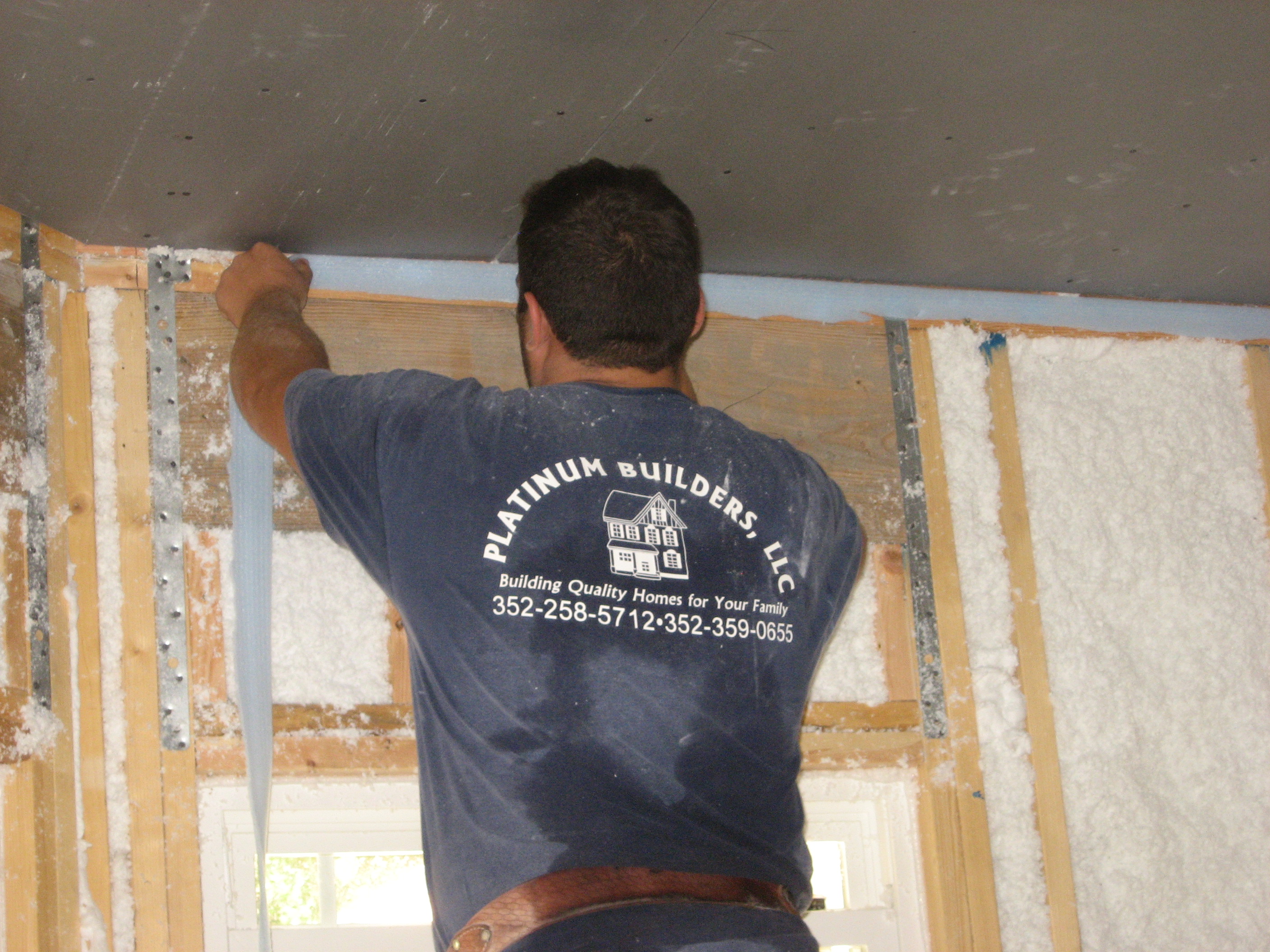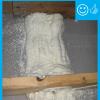Air Sealing Drywall to Top Plate
Scope
Air seal drywall to top plates at all attic/wall interfaces to minimize air leakage.
- Install drywall then seal the seam from the attic side with caulk, foam, or drywall adhesive (but not other construction adhesives).
OR - Before installing drywall, install caulk or other sealant or a foam gasket to the face of the top plate then install the drywall. If this method is used, make sure the sealant or gasket remains intact during the drywall installation.
See the Compliance Tab for related codes and standards requirements, and criteria to meet national programs such as DOE’s Zero Energy Ready Home program, ENERGY STAR Certified Homes, and Indoor airPLUS.
Description
In simplest terms, a wall is a six-sided box consisting of a horizontal top plate, a horizontal bottom plate, and vertical side studs, with a gypsum board and wall sheathing back, all fastened together to create a wall cavity that is typically filled with insulation when this wall is part of the building’s exterior shell. If air is allowed to flow through the wall cavity, i.e., if the wall cavity is not air tight, the flowing air can reduce the insulation’s effectiveness. If the wall cavity is not airtight, convective loops can also develop within wall cavities, due to temperature differences between the inside and outside surfaces and top and bottom sections of the wall. These convective loops can encourage more air flow, further reducing insulation effectiveness and potentially resulting in moisture problems.
To ensure the optimum energy performance and moisture management of the whole house, all of the wall components should be connected to the each other and to the ceiling and floor in a way that creates a continuous and complete air barrier system.
Gypsum board drywall is an air barrier material (BSC 2009). The taping of drywall seams results in a plane of airtightness at the field of the wall. However, several steps must be taken
to use this material properly to create a continuous and complete air barrier system. To do this, it is important to create air barrier continuity at the perimeter of drywall assemblies as well as at all penetrations through the drywall. Air barrier continuity at the perimeter of drywall assemblies is achieved by sealing the edges of the drywall to solid framing materials. This requires a continuous bead of sealant along:
- all exterior wall bottom and top plates,
- all top plates at insulated ceilings,
- rough opening perimeters,
- both sides of the first interior stud of partition walls (BSC 2009).
This air sealing can be achieved by applying caulk, glue, or strips of foam gasket material to the surface of the top plates, bottom plates, and framing around doors and windows before installing the drywall. This would typically be done by the drywall installer. This task should be included in the contract for the appropriate trade depending on the workflow at the specific job site.
How to Air Seal the Sheetrock to the Top Plate
- Apply a continuous bead of caulk or glue or staple a strip of compressible foam gasket material along the top plate along all exterior walls and all interior walls.
- Install drywall over caulk, glue, or gasket material. Mud and tape drywall.

Figure 1 - A pliable foam gasket material is stapled along the top plate prior to installing drywall ![]()

Figure 2 - A continuous bead of caulk or glue is applied to the top plates on exterior walls and interior walls that intersect insulated ceilings, as well as rough openings around doors and windows, prior to installing drywall ![]()

Figure 3 - Sealing the drywall to the top plate is one step in forming a continuous, complete air barrier in the home’s exterior shell ![]()
Ensuring Success
When drywall is installed, visually inspect that drywall installer is applying caulk or a foam gasket along surface of top plate before hanging drywall. After drywall installation it may be possible to detect air leakage at this location with an IR camera or smoke pencil during a blower door pressure test. Although taped, mudded drywall should provide some air barrier as well.
Climate
No climate specific information applies.
Training
CAD Images
None Available
Compliance
ENERGY STAR Certified Homes (Version 3/3.1, Revision 08), Rater Field Checklist
Thermal Enclosure System:
4. Air Sealing (Unless otherwise noted below, "sealed" indicates the use of caulk, foam, or equivalent material):
4.5 Drywall sealed to top plate at all unconditioned attic / wall interfaces using caulk, foam, drywall adhesive (but not other construction adhesives), or equivalent material. Either apply sealant directly between drywall and top plate or to the seam between the two from the attic above.
ENERGY STAR Revision 08 requirements are required for homes permitted starting 07/01/2016.
Exhibit 1: Mandatory Requirements. Certified under ENERGY STAR Qualified Homes Version 3
Table 402.4.2 Air Barrier and Insulation Inspection Component Criteria, Walls: Corners, headers, narrow framing cavities, and rim joists are insulated.*
Table N1102.4.2 Air Barrier and Insulation Inspection, Walls: Corners, headers, narrow framing cavities, and rim joists are insulated.*
Table R402.4.1.1 Air Barrier and Insulation Installation, Walls: Junction of foundation and wall sill plates, wall top plate and top of wall, sill plate and rim-band, and rim band and subfloor are sealed. Corners, headers, and rim joists making up the thermal envelope are insulated.*
Table N11402.4.1.1 Air Barrier and Insulation Installation, Walls: Junction of foundation and wall sill plates, wall top plate and top of wall, sill plate and rim-band, and rim band and subfloor are sealed. Corners, headers, and rim joists making up the thermal envelope are insulated.*
*Due to copyright restrictions, exact code text is not provided. For specific code text, refer to the applicable code.
More Info.
Tight Air Sealed Home = Comprehensive Draft Protection
Alternate Terms
Sales Message








